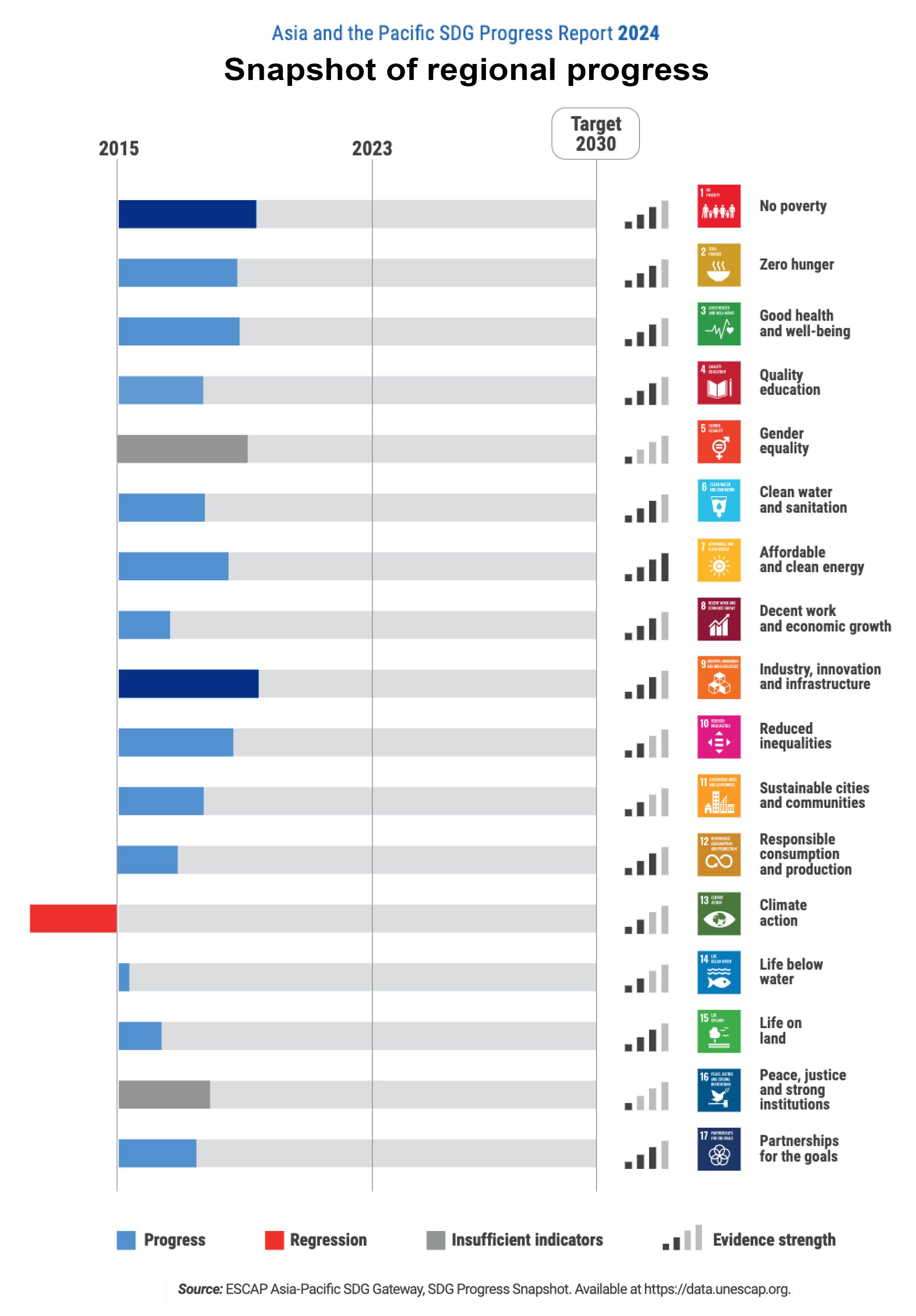

Asia-Pacific countries are unlikely to close the gap, much less achieve the targets set for the United Nations Social Development Goals ( UN SDGs ) by 2030, mainly because of persisting challenges of poverty and inequality, with gender and location playing pivotal roles, according to the 2024 SDG Progress Report, published by the UN Economic and Social Commission for Asia and the Pacific ( Escap ).
“Alarmingly, none of the 17 SDGs are on track to be achieved by the 2030 deadline,” states Armida Salsiah Alisjahbana, UN undersecretary-general and Escap executive secretary. “Trends suggest that at the current pace, the region will not achieve all 17 SDGs before 2062 – marking a significant 32-year delay.”
The SDGs, also known as the Global Goals, were adopted by the UN in 2015 as a universal call to action to end poverty, protect the planet and ensure that by 2030 all people enjoy peace and prosperity. The goals – which include eliminating poverty and world hunger, and achieving good health – are being used as benchmarks by global financial institutions and businesses as they transition to sustainability.
Although the report did not attribute specific reasons as to why Asia-Pacific countries are unlikely to achieve the SDG targets for 2030, it cited the pandemic and natural disasters as factors that are making achieving the SDGs challenging.
“In 2024, we are at a critical juncture in our efforts to achieve the 2030 Agenda for Sustainable Development,” Alishjabana adds. “As the global economy recovers from the pandemic, resilience is required to confront ongoing crises and increasingly severe natural disasters.”
Asia-Pacific is set to achieve only one-third of the necessary progress by 2030. As of 2023, the average progress towards achieving all SDGs has incrementally risen to 17%. Contributing to this sluggish performance, she says, is an unfavourable global context.
In terms of progress by country, the report categorized Asia-Pacific countries as least developed countries ( LDCs ), landlocked developing countries ( LLDCs ) and small island developing states ( Sids ).
There are currently 46 countries on the list of LDCs, including Afghanistan, Angola, Bangladesh, Benin, Bhutan, Burkina Faso, Burundi, Cambodia, Central African Republic, Chad, Comoros, Democratic Republic of the Congo, Djibouti, Eritrea, Ethiopia, Gambia, Guinea, Guinea-Bissau, Haiti and Kiribati.
There are currently 10 countries classified as LLDCs in Asia – Afghanistan, Nepal, Bhutan, Lao People’s Democratic Republic, Kazakhstan, Kyrgyzstan, Mongolia, Tajikistan, Turkmenistan and Uzbekistan.
The Sids include low-lying coastal countries that share similar sustainable development challenges, including small population, limited resources, remoteness, susceptibility to natural disasters, vulnerability to external shocks, and excessive dependence on international trade. They include Antigua, Barbados and the Maldives.
The Sids, according to the UN Escap report, are the ones most in need of support given their unique vulnerabilities, ranging from geographical isolation to limited resources and climate change impacts.
The Covid-19 pandemic, the report adds, all but erased progress these nations made towards the SDGs since 2015, leaving their achievement at a mere 5.9%.
The LDCs and LLDCs fared marginally better than the islands, registering only 11.5% and 13%, respectively, but still falling significantly short of what is needed to achieve the SDGs by 2030.
